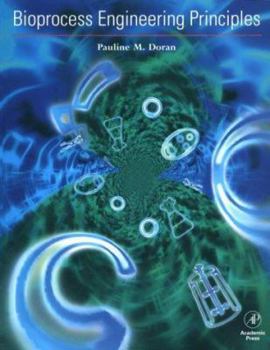Bioprocess Engineering Principles
Select Format
Select Condition 
Book Overview
The emergence and refinement of techniques in molecular biology has changed our perceptions of medicine, agriculture, and environmental management. Scientific breakthroughs in gene expression, protein engineering, and cell fusion are being translated by a strengthening biotechnology industry into revolutionary new products and services. Many a student has been enticed by the promise of biotechnology and the excitement of being near the cutting edge of scientific advancement. However, graduates trained in molecular biology and cell manipulation soon realize that these techniques are only part of the picture. Reaping the full benefits of biotechnology requires manufacturing capability involving the large-scale processing of biological material. Increasingly, biotechnologists are being employed by companies to work in cooperation with chemical engineers to achieve pragmatic commercial goals. For many years, aspects of biochemistry and molecular genetics have been included in chemical engineering curricula, yet there has been little attempt until recently to teach aspects of engineering applicable to process design to biotechnologists.This textbook is the first to present the principles of bioprocess engineering in a way that is accessible to biological scientists. Other texts on bioprocess engineering currently available assume that the reader already has engineering training. On the other hand, chemical engineering textbooks do not consider examples from bioprocessing, and are written almost exclusively with the petroleum and chemical industries in mind. This publication explains process analysis from an engineering point of view, but refers exclusively to the treatment of biological systems. Over 170 problems and worked examples encompass a wide range of applications, including recombinant plant and animal cell cultures, immobilized catalysts, as well as traditional fermentation systems.
Format:Paperback
Language:English
ISBN:0122208560
ISBN13:9780122208560
Release Date:May 1995
Publisher:Academic Press
Length:456 Pages
Weight:2.00 lbs.
Dimensions:1.0" x 7.6" x 10.3"
Customer Reviews
2 ratings
"Biochemical Engineering" for biology students
Published by Thriftbooks.com User , 19 years ago
This is a comprehensive textbook on biochemical engineering suitable for students with only elementary knowledge of mathematics and engineering. It covers all the main aspects of the field but with minimal prerequisite knowledge of differential calculus and statistics. In the first part are given concepts of mass and energy balances, thermodynamics, hydrodynamics, heat and mass transfer, and unit operations. It is followed with reaction principles, kinetics of biological processes, heterogeneous reactions, and reactor engineering principles. Each topic includes practical examples and numerical solutions to problems. Students with biological background will find this book as the most appropriate introduction to biotechnology.
Valuable for Intermediate Students
Published by Thriftbooks.com User , 25 years ago
This book is valuable especially for intermediate students who took some courses of microbiology and fermentation.It covers from basic to practical, and explains equations and math-related things well that most students feel difficulties.You can even calculate the fraction of plasmid bearing cell in batch culture with usual decreasing copy number, and you can understand oxygen transfer rate clearly.






